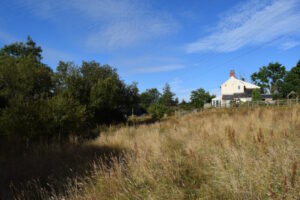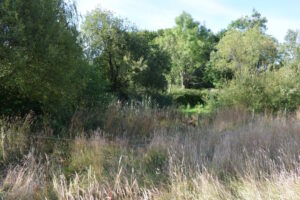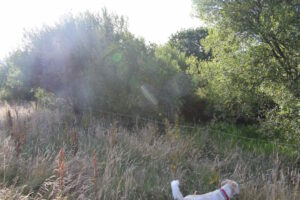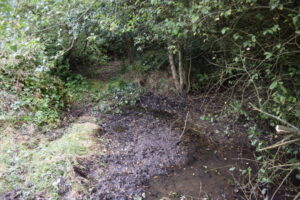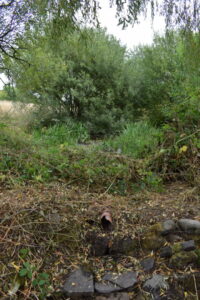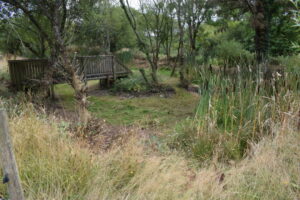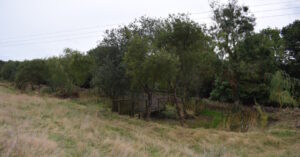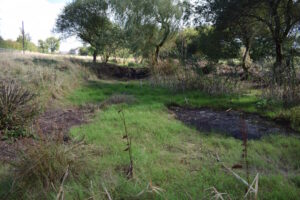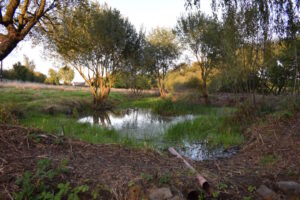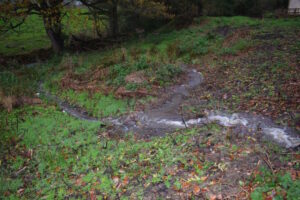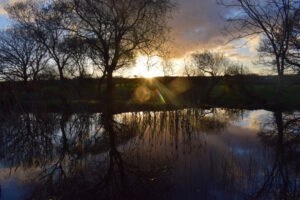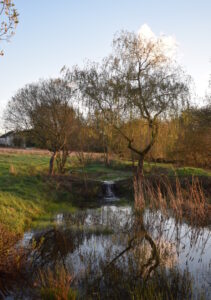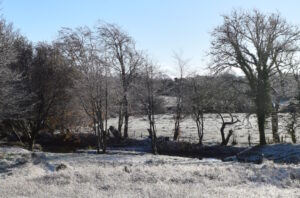14/03/2023
This post has nothing to do with either foraging or fungi, but I hope at least some of my readers will be interested in what I have been doing since we moved to a smallholding in West Wales. As well as turning an ad-hoc equestrian property into a food producing holding, I have been restoring a system of three wildlife ponds which had been totally neglected for years – decades maybe. When we moved in in July the top two ponds were silted to the top and totally obscured by fallen willows and brambles. When I had hacked my way through to the top pond, I found it had a trickle of water flowing over deep mud and disappearing over a partially-collapsed dam I couldn’t access at all. The middle pond had a tiny pool of water in the centre, and the bottom pond was bone dry. The previous occupants told me that the bottom pond clay liner was cracked, but the real problem was the water supply.
I have now (just) finished the restoration work and the whole system is ready for wildlife to come roaring back in the spring. The story of the restoration is best told in pictures. A five minute video taken today of the fully restored system can be found here.
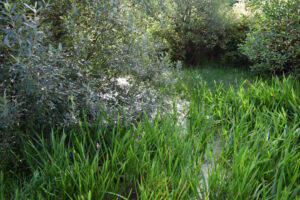
29/07. Middle pond with a tiny puddle of water in the centre. The mud is more than half a metre deep under the puddle.
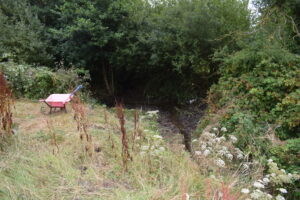
17/08. Exit of the top pond cleared. I have started to dig a new channel in the bottom of the leat so water can reach the middle pond.
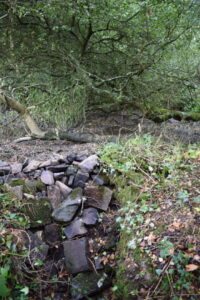
1`7/08. Top pond from below the dam. This was my first attempt to rebuild it. At this point I just wanted all the meagre water to go the other way. We were in a drought at the time.
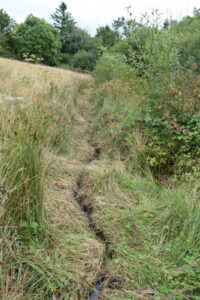
17/08. Looking towards the top pond from half way down the leat to the middle pond, showing the new channel.
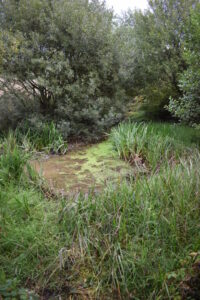
17/08. Water starts reaching the middle pond in drought conditions for the first time for many years. I’ve just started the job of clearing the bur-reeds.
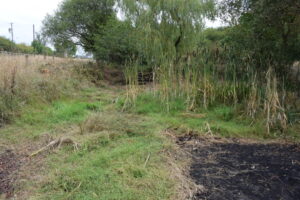
17/08. Bottom pond from the bridge. I’ve had the first big fire, so this was the first time there was easier access in this area.
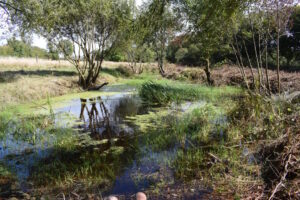
07/09. The water level in the middle pond has now reached the pipes for the first time. I later replaced the pipes with a slate “ford” and raised the water level, but at that point I wanted the bottom pond to start filling.
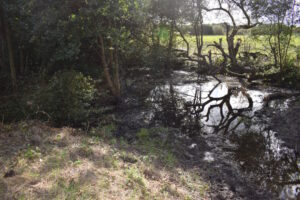
16/09. Attention now turns to the major task of clearing the willows from the top pond. This involves clambering around on branches, over 1 metre deep mud, with a pruning saw. I was too scared to use a chainsaw in these conditions (having never used one before).
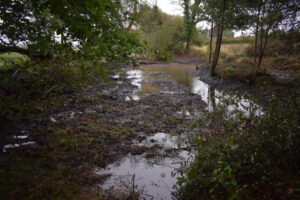
14/10. The willows are now mostly cleared from the top pond, and it is just beginning to look a bit like a pond again.
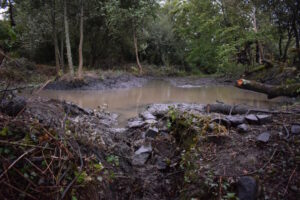
14/10. Top of the dam taken down again in order to lower the water level because I have started dredging the top pond (entirely by hand).
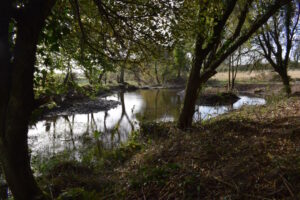
21/10. Dredging complete apart from the topmost section, which I will dredge later this year. Plenty of water coming down the stream, and two bridges installed.
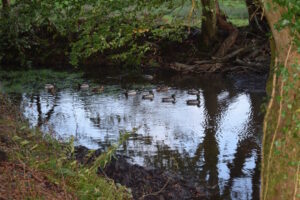
30/10. The first large contingent of ducks arrive. They will come and go throughout the winter. Only one pair have set up permanent residence.
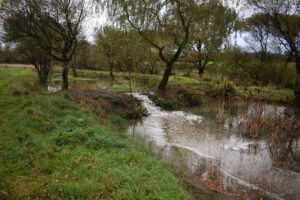
01/11. The stream is in full flood for the first time, and I realise I am going to have to change the dam so that when it floods like this, most of the water goes the other way!

